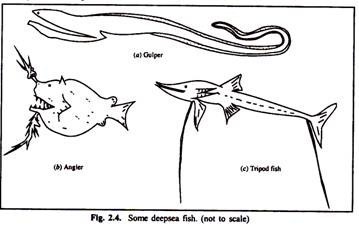ADVERTISEMENTS:
Each community has a variety of species, some of which are rare, others are common and still others are abundant.
Thus, no community consists of species of equal abundance. Diversity tends to increase with increase in the area sampled, since the sampling progressively brings in a wider spectrum of habitats, ecosystems and biomes for consideration.
The following types of species diversity are described.
ADVERTISEMENTS:
These are Whittaker’s (1977) four levels of inventory diversity:
1. Point Diversity:
This is the diversity on the smallest scale, the diversity of a micro-habitat or sample taken from within a homogeneous habitat. It is but natural to expect differences in point diversity of the two sites (or micro-habitats) of a habitat.
2. Alpha Diversity:
ADVERTISEMENTS:
This is the second category of diversity. It is defined as within-habitat diversity (Mac Arthur 1965). It is also defined as the variety of organisms occurring in a particular habitat (often called local diversity).
3. Gamma Diversity:
It is the third category of inventory diversity. It is defined as the diversity of a larger unit such as an island or landscape. It is considered to be the overall diversity of a group of areas of alpha diversity. Gamma diversity equals alpha diversity x beta diversity. Thus, it is the inclusive diversity of all the habitat types within an area (region).
4. Epsilon Diversity:
This is the fourth category of inventory diversity. The epsilon or regional diversity is defined as the total diversity of a group of areas of gamma diversity. According to Magurran (1988), a single plant may be considered as a unit of alpha diversity; a leaf as an area of point diversity; a group of plants occurring together as an area of gamma diversity; and the forest within which the plants are located as an area of epsilon diversity.
5. Other Categories:
Beta Diversity:
The term P-diversity was coined by whittarker (1960,1977). It is essentially the same as Mac Arthur’s (1965) between habitat diversity. Beta diversity is a measure of how different or similar a range of habitats are in terms of the variety of species found in them. It tells us how species diversity changes along gradient.
Another way to view beta diversity is to compare the species composition of different communities. For example, forests have more species than grasslands; or more fish species occur in the potamon part of a river than in the rhithron part. Beta diversity is also called differentiation diversity or turnover diversity.
ADVERTISEMENTS:
According to Ricklefs and Miller (2000), it is not practical to measure beta diversity directly because the habitat distributions of species overlap. But we can calculate the number of unique habitats recognized by species within a region from the following relationship: beta diversity = gamma diversity/alpha diversity (Fig. 7.1).
Delta Diversity:
It is defined as the change in species composition and abundance between areas of gamma diversity, which occur within an area of epsilon diversity. It represents differentiation diversity over wide geographic areas.
